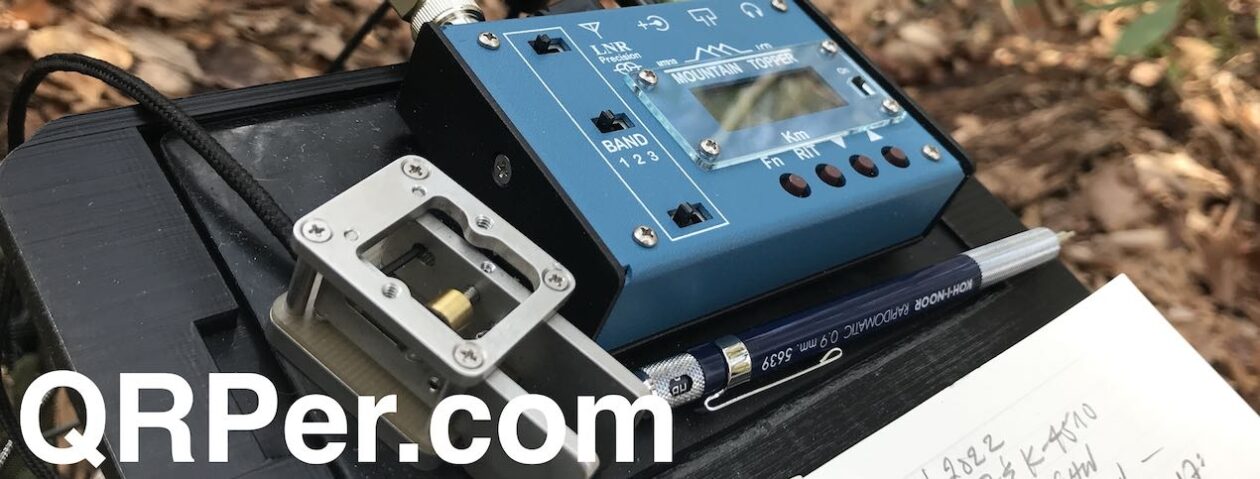Many thanks to Evan (K2EJT) who shares the following article about his portable field radio kit which will be featured on our Field Kit Gallery page. If you would like to share your field kit with the QRPer community, read this post.
K2EJT’s Venus SW-3B Field Kit
by Evan (K2EJT)
I’m big on small. When it comes to field radios, especially ones I’m going to have to carry any distance, I prefer them to be small and light. I don’t mind lugging a big heavy rig around if I’m going to be 20 feet from my truck, but if I’m hiking five miles into the woods, I want to measure my kit weight in grams, not pounds. That’s where this little kit comes in. Weighing in at only 733g, this kit fits the bill perfectly:
 The stuff sack is from Dutchwear Gear. It’s crazy light, and the entire kit fits in the palm of your hand. Inside you’ll find everything you need to do a field activation.
The stuff sack is from Dutchwear Gear. It’s crazy light, and the entire kit fits in the palm of your hand. Inside you’ll find everything you need to do a field activation.
The rig is a Venus SW-3B. I really like this radio, especially for what it costs. While it’s not as nice a radio as say my MTR-4B, you can get two of them for the price of one LNR radio, and get them in half the time! The one thing that you need to be careful with on this radio are the rotary encoder and the gain knobs. They protrude from the face of the radio, and I’m not sure how robust they are. Because I was concerned about how much abuse they’d handle, I 3D printed a set of side rails and a cover for the radio to protect them.
The key is a cwmorse.us N0SA paddle. I have two of these keys. One lives in this kit, and the other lives with my KX1. They’re really nice keys for their size and weight. There are downsides (like the sides being open), but aside from that I really enjoy sending on them.
As for an antenna, I’m running a Spark Plug Antennas 64:1 EFHW. The wire is cut for 40, 20, 15, and 10, and is made of 24ga silicone jacketed wire with a tiny plastic clip on the end to attach to the throw line. I really like this antenna. It’s a great combination of small size, low weight, and good durability. It works very well. In fact, I like it so much I own two.
The coax is 15’ of RG316 from Amazon. I don’t generally like to drag expensive coax into the woods. I’ve killed enough of it to know it’s not worth spending a fortune on something that’s likely to get destroyed.
The throw bag and line are the same setup I run with my KX1. It consists of a ripstop nylon bag with a paracord loop sewn in at the open end, and velcro across the top to close it. Fill the bag with rocks, close the velcro, and you’re ready to go. The line is 65’ of high viz, reflective 1.8mm cord. The throw bag doubles as a stuff sack for the cord when not in use.
The headphones are a set of old Skullcandy earbuds I’ve had forever. The kit also includes a Rite in the Rain pad and a pencil for logging, the power cable for the rig, and the radio instruction manual.
Powering the whole thing is a set of four AA size LiFePO4 batteries in a 4 cell holder. The four batteries combined are a little over 13V fully charged, and are about 2600mAh. They can power this little radio for a LONG time. I get multiple activations out of a single charge. I threw a set of Anderson Powerpoles on it to connect to the power cable on the radio.
This is the kit I carry when I want to go light. As always, I could go lighter, but then I’d have to make compromises I’m not willing to make. I’ve done plenty of activations with this kit, and it never lets me down. You can see a description of the kit here:
And the kit in use here:
Gear list:
- Venus SW-3B
- N0SA key
- Spark Plug Antenna
- Rite in the Rain pad
- LiFePO4 AA Batteries
- Battery Holder
- Cordage
- Stuff Sack
- Anderson Powerpoles
- Wire for antenna
- Plastic clips I use for my antennas
- File for rails and cover
Evan (K2EJT)























































